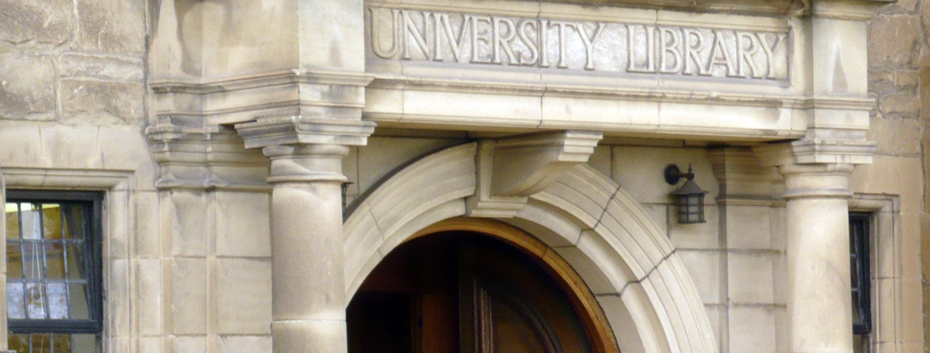Palace Green Library
The building today known as Palace Green library is in fact a group of buildings – and their various extensions – that date from the 15th century onwards. Today they form the basis of Durham University’s special collections libraries and archives.
The Exchequer Building
Dating from the mid-fifteenth century, this is the only of the Prince-Bishops administrative buildings to have survived from medieval times. It function was to administer the bishops' legal and financial transactions – a key function for a bishopric was wealthy as Durham.
The building contained a court, and a small dungeon as well. Today, it houses several collections of antique books, including those of Bamburgh Castle, and Martin Routh, president of Magdalene College, Oxford.
The Exchequer Building was constructed during the Bishopric of Robert Neville, whose crest can be seen on the main façade. Neville came from of the region’s most prominent families, who were the first lay-people to be given permission to be buried inside the cathedral. They were also behind the gifting of the famous Neville Screen to that building.
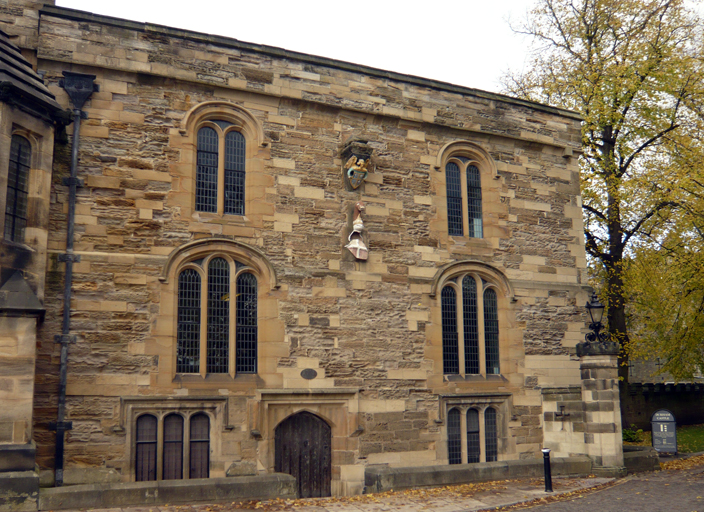
The fifteenth-century exchequer building. The windows were modified in the seventeenth century by Bishop John Cosin.
John Cosin’s Library
It was the seventeenth-century Bishop, John Cosin, who was ultimately to have the longest lasting impact on the buildings on the west side of Palace Green – by building a library, that has remained, and continued to expand until today.
John Cosin became Bishop of Durham immediately after the English Civil War, and thus inherited a Bishopric whose buildings were in a run-down state. (The fact that the Scots supported the monarchy, led to battles between them and Oliver Cromwell, who conveniently used Durham as a base.)
As an old ally of the pre-Civil War king, Charles I, Cosin was held in high esteem by his son Charles II. (Cosin had been the master of ceremonies at Charles I's coronation, for example).
Cosin’s privileged position, and the poor state of Durham’s buildings, gave him the opportunity to undertake a large amount of construction and restoration work.
Apart from the library, which he built in 1669, Cosin also built almshouses on Palace Green, and undertook extensive refurbishment of the Castle and Cathedral – especially of their woodwork.
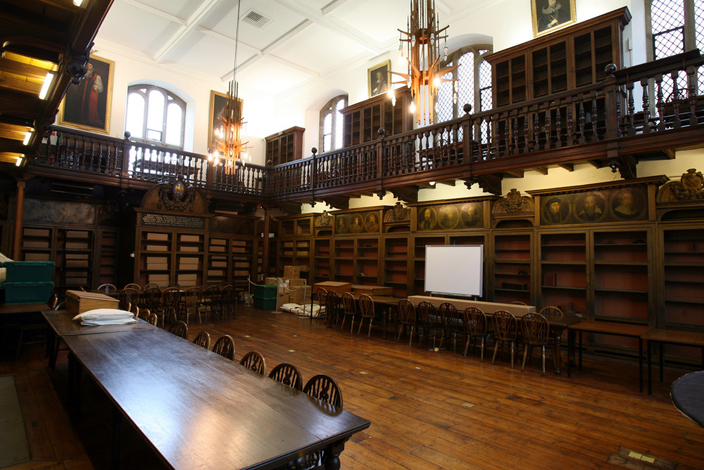
Cosin's seventeenth century library. The portraits above the bookcases provided an easy way to organise the collection. The works of an author would be on the shelves underneath his portrait. This photo has been taken during a period of extensive conservation work, hence the absence of books on the shelves.
© Durham University
The University Library
Understandably, the library founded by John Cosin as the first public lending library in the North East of England formed the basis of Durham University’s own library when it was established in 1832.
In 1858, a purpose-built library building was designed by the renowned architect Anthony Salvin, adjacent to Cosin's own building.
One of the most interesting details about Salvin's library building are the gargoyles with faces of top university staff members.
Why did craftsmen carve gargoyles with the recognisable faces?
Often, simply because they could. These gargoyles are small and hard to see – they probably reflect a skilled craftsman challenging himself, usually for the sake of the challenge itself, and for the fun of it too.
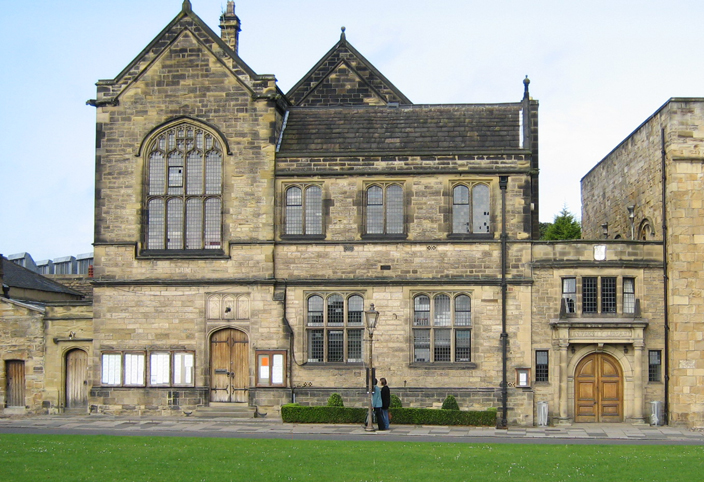
The nineteenth-century building designed as the University Library by Anthony Salvin.
The George Pace Building: Capturing the Spirit of a Place
An extension to Palace Green Library was constructed in 1968 by another well known architect of his day, George Pace. The Pace building is rich in design details and materials from its period and would have been state of the art when constructed.
Unlike many nineteen-sixties buildings, this one still looks good forty years after it was constructed.
This is because Pace was able to successfully design a modern building that blends in with its surroundings without trying to pretending to be historic.
Part of its success lies in the way traditional materials (such as stone) are used to make the building fit in with the adjacent Cathedral and Castle, and because it looks defensive – very appropriate for its location on the Castle walls.
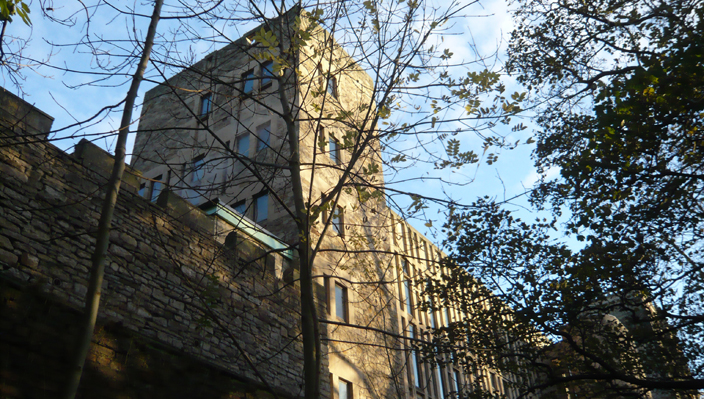
Exterior view of the Pace Library Building - river facade. The building is well designed to vanish behind the older library buildings on Palace Green, and is dwarfed by the Castle and Cathedral on the river side, making it an unintrusive but attractive addition to the World Heritage Site.
The Diocesan Registry
Constructed in 1822 as the registry of the Diocese of Durham, this building became part of Palace Green Library in 1978. The coats of arms on its facade are those of Bishop, Shute Barrington.
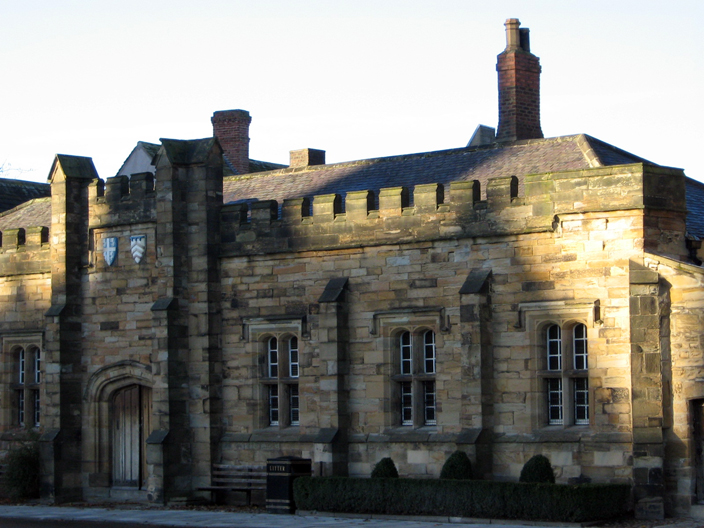
Exterior view of the Diocesan Registry. The shield on the right is that of Bishop Shute Barrington, who had it constructed.

